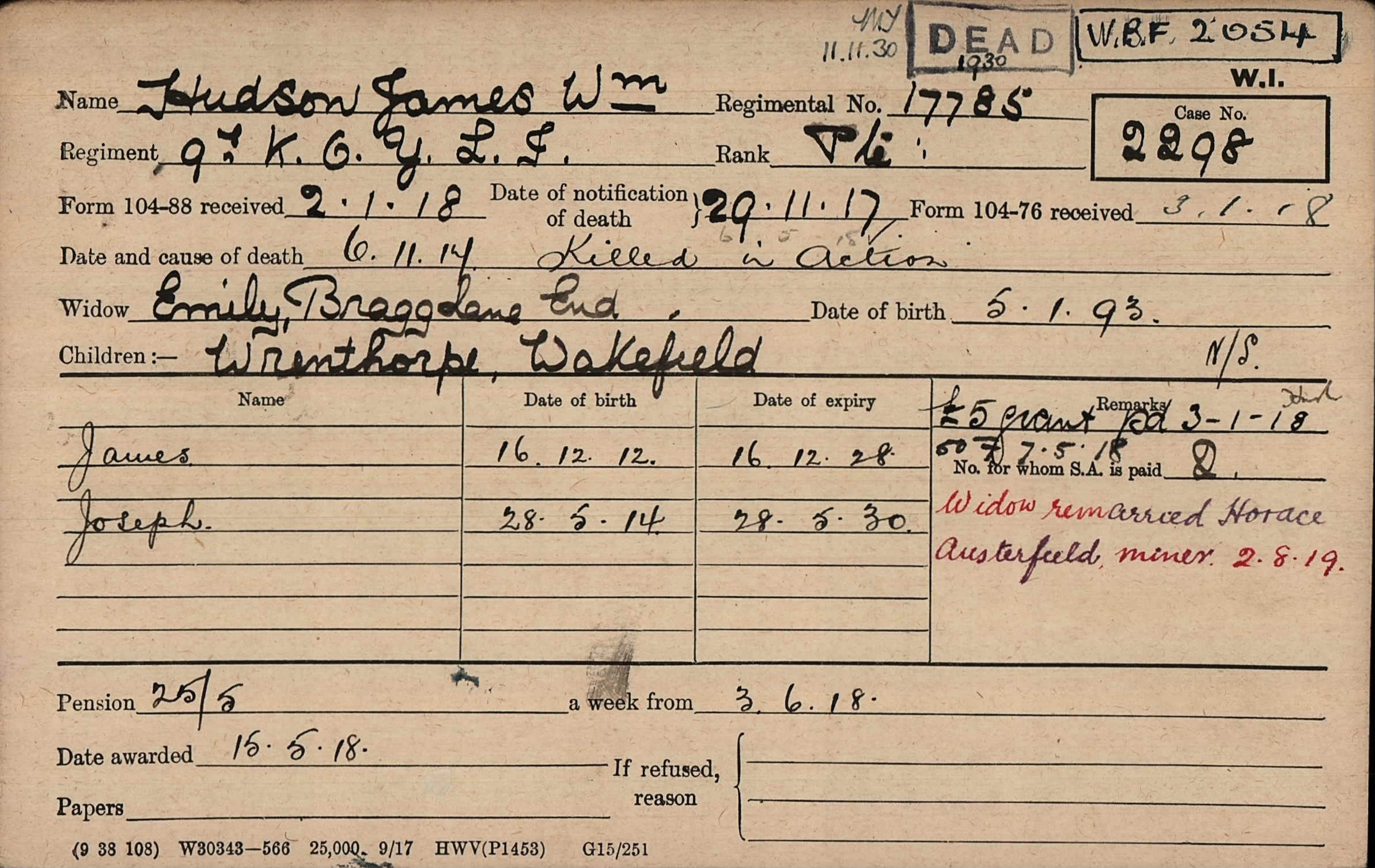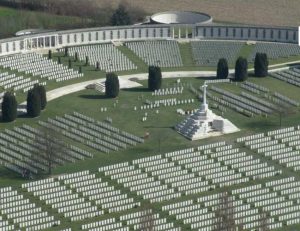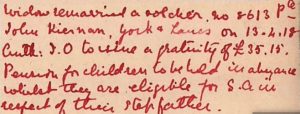James W Hudson of Wrenthorpe
While assisting with a Western Front Association project I happened upon a few local people, one of which is James W Hudson. The project was for members to look at each of the Pension Record Cards looking for ‘alias soldiers’ – soldiers who served using more than one name.

Pension Card for James Wm Hudson from the WFA collection
In late 1917 James Hudson would have received the news that his son James William had been Killed in Action.
James and his second wife Zillah had married around 1898. Zillah became stepmother to James William and Gertrude, aged 21 and 16.
In 1911 the original family were living at Bragg Lane End, Wrenthorpe. James, his first wife and James William relocated to Wrenthorpe before 1895 as Gertrude was born there. James William, like his father, was working as a miner,
In 1911 the original family were living at Bragg Lane End, Wrenthorpe. James, his first wife and one of the many local mines.
Although mining was a ‘Scheduled (or reserved) Occupation’ during WW1, James William did enlist. I wonder what his wife, Emily Mellor, who he had married in 1912, would have thought of that? James W enlisted in the KOYLI’s as part of Kitchener’s Army and served as Private 17785, but before enlistment, he had become a father to two children – James born in December 1912 and Joseph born in May 1914.
The 9th Battalion, of which James W was part saw many of the now infamous battles of The Great War. In 1917, they were in action during the German retreat to the Hindenburg Line, the Arras offensive, the Third Battle of Ypres and The Cambrai Operations. But it was on the 6th of November 1917 that James W’s war came to an abrupt end when he was Killed in Action. There is no grave for James W, no little piece of England in some foreign land with a marker to pay your respects to. There is only a name on a wall – one name in over 3500 who are remembered on the Tye Cot Memorial, Belgium.

WW1 Trench map and the modern-day area around the Tyne Cot Memorial and Cemetery

Part of Tyne Cot Memorial and Cemetery
W’s medal card provides a little insight into when he enlisted as he qualified for the 1915 Star as well as the Victory and British Medals.
As well as receiving his medals, Emily would have received about £14 from the Army in two allotments, 1918 and 1919. She was also eligible for a grant and a small pension for herself and her two children. The money (pension) for her two sons stopped when they reached 16 years old. But Emily’s pension discontinued as soon as remarried, which she did on the 2nd of August 1919 to Horace Austerfield, another miner.
lives of Emily and Horace continued after the war and as a couple, they went on to have children.
When the time came around for the 1939 Register to be compiled Emily and her husband were living at 267 Bradford Road, Wakefield, along with some of their children and James, Emily’s son from her first marriage to James William Hudson.
As of September 3rd, I wonder if Emily cast her mind back to 1914. Or did she remember 1915 when James W would have gone to serve his country and pay the ultimate sacrifice?
Emily died in 1957 and Horace joined her the following year. They both rest within the boundary of St Paul’s churchyard.


